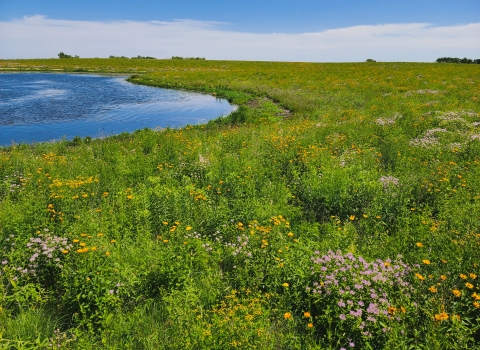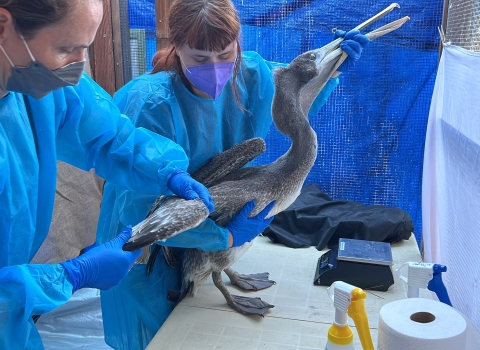DENVER – Based on a thorough review of the best available science, the U.S. Fish and Wildlife Service (Service) is delisting the water howellia from the Endangered Species Act (ESA) due to recovery. The decision follows public comment and peer review periods on the proposed decision published in October 2019.
“Thanks to the ongoing efforts from our conservation partners in local, state, federal and tribal governments, the water howellia has been fully recovered,” said U.S. Fish and Wildlife Service Regional Director Noreen Walsh. “The conservation and recovery efforts of the water howellia are a model for the how the ESA can bring diverse stakeholders together to collaborate on win-win solutions that benefit wildlife, healthy landscapes and local economies.”
The water howellia is an annual aquatic plant endemic to areas in California, Idaho, Montana, Oregon and Washington. It can be found in seasonal wetlands that fill with water in the winter and spring seasons and dry out in the summer and autumn seasons. The dry season is significant to this plant's reproduction, as the seeds require exposure to the air to germinate, while the wet season allows for growth and flowering.
At the time of listing in 1994, the Service was aware of 107 occurrences of this plant in four states. The species faced threats primarily from land management activities, including timber harvest, grazing and road building, and from competition with invasive plants. As a result of improved science, land transfers and collaborative management plans, this aquatic plant is now found in five states with 307 known occurrences. A majority of those occurrences (84%) are on federal lands with management plans providing for the long-term conservation of the species.
This recovery success would not have been possible without the efforts of the U.S. Department of Defense, U.S. Forest Service, Bureau of Land Management, Montana Department of Natural Resources and Conservation, Idaho Natural Heritage, Idaho Department of Fish and Game, Coeur d’Alene Tribe, Montana Natural Heritage, Washington Department of Natural Resources, and Metro, the Oregon regional government.
"Recovery of this species has not occurred because the population increased, but because federal listing creates a collaborative process,” said Andrea Pipp, botanist for the Montana Natural Heritage Program, one of the conservation partners responsible for the water howellia's recovery success. “Listing allowed federal, state and local agencies, non-governmental organizations and private landowners to work together to implement management changes that protected it from threats that would negatively impact its hydrology and habitat. Listing also encouraged scientific studies and surveys that brought forth useful information.”
The mission of the U.S. Fish and Wildlife Service is working with others to conserve, protect, and enhance fish, wildlife, plants, and their habitats for the continuing benefit of the American people. For more information on our work and the people who make it happen in the West, visit our website, or connect with us through any of these social media channels: Facebook, Twitter, Flickr, YouTube, and Instagram.


